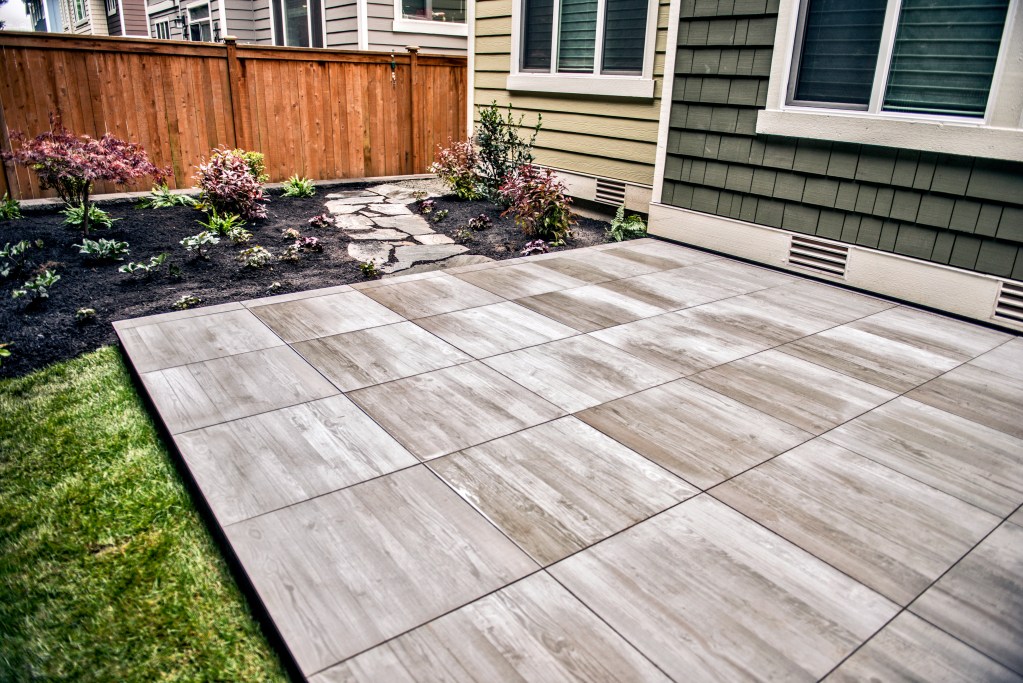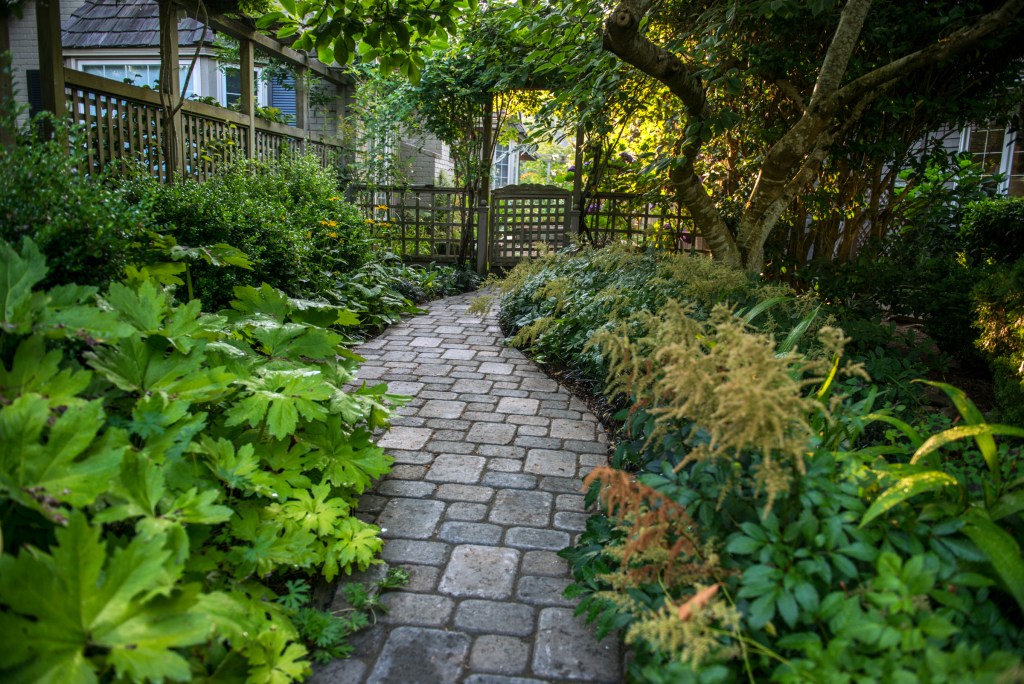Creating Functional Outdoor Rooms
Definition:
Outdoor rooms are dedicated spaces within your yard, each designed for specific activities or purposes, similar to how indoor rooms serve particular functions (e.g., living room, kitchen, dining room). These spaces can cater to various needs, from relaxing to entertaining.
Examples:
- A cozy reading nook nestled between trees or under a pergola for quiet time.
- A full-fledged outdoor kitchen equipped with a grill, countertop, and sink for seamless cooking experiences.
- A spacious gathering area with comfortable seating where family and friends can enjoy outdoor meals, games, or conversations.
Tips:
- Consider Purpose: Think about how you envision using the space. Whether for relaxation, outdoor cooking, or social activities, each area should reflect its intended use.
- Use Natural Boundaries: Utilize existing elements in your landscape, such as trees, shrubs, hedges, or fences, to establish clear boundaries and give each space a sense of privacy and intimacy. These natural barriers can help define the flow of the yard while maintaining a cohesive design.
Furniture Selection and Arrangement for Patios and Decks
Choosing the Right Furniture:
When selecting furniture for your outdoor spaces, it’s crucial to choose materials that can withstand the elements while maintaining comfort and style. Opt for weather-resistant materials like teak, aluminum, wrought iron, or durable plastic that will hold up against rain, sun, and temperature fluctuations.
- Durability: Look for furniture that resists fading, corrosion, and wear to ensure longevity.
- Comfort: Choose cushioned seating options for a cozy, inviting feel. Add throw pillows for extra comfort and a touch of personality.
Arranging the Space:
How you arrange the furniture is key to creating a functional, inviting environment. Keep in mind the flow of traffic and the natural use of the space when planning your layout.
- Create Conversation Areas: Group your seating in a way that encourages interaction, such as a circle or U-shape around a central focal point like a coffee table or fire pit.
- Leave Walkways: Ensure there is adequate space for people to walk freely between pieces of furniture without feeling cramped or obstructed. This allows for easy movement and access to different areas of the patio or deck.
Cooking, Dining, and Entertainment Spaces
Outdoor Kitchens:
Outdoor cooking spaces elevate the dining experience, making meal preparation part of the fun. Think beyond just a grill — consider installing a sink, counter space, and even a refrigerator to create a fully functional outdoor kitchen. Whether grilling, preparing meals, or enjoying drinks, an outdoor kitchen ensures you don’t have to keep running indoors for every task.
Dining Areas:
The dining area is an essential part of any outdoor room. Choose a dining table and chairs that complement the size of your space and cater to your family’s needs.
- Large Table: A spacious dining table is perfect for hosting larger gatherings or family barbecues.
- Small Table: For more intimate meals, opt for a compact table that fosters cozy dining experiences.
Entertainment Options:
To create a truly enjoyable outdoor experience, add elements that enhance entertainment and relaxation.
- Fire Pit or Fireplace: A fire pit can provide warmth, create ambiance, and serve as a gathering spot on cooler evenings.
- Sound System: A quality outdoor sound system can set the mood with music for your gatherings.
- Outdoor Games: Incorporating games like cornhole or setting up a small card table encourages friendly competition and social interaction.
Summary Notes
- Outdoor Rooms: These are specially designated spaces that cater to various activities, enhancing the usability and enjoyment of your yard.
- Furniture Selection and Arrangement: Thoughtful furniture choices and arrangements can make your outdoor spaces more comfortable, functional, and inviting.
- Cooking, Dining, and Entertainment: Outdoor kitchens, dining areas, and entertainment features transform your outdoor space into a functional extension of your home, perfect for cooking, dining, and socializing.
Considerations:
- Outdoor Room: Imagine creating a shaded area with plush seating and soft lighting for a relaxing retreat.
- Furniture Arrangement: Arrange a sectional sofa around a coffee table in a central location to encourage conversation and gatherings.
- Outdoor Kitchen: Include a built-in grill with counter space for meal prep, making outdoor cooking more enjoyable and convenient.
Key Definitions
- Outdoor Room: A clearly defined area within your outdoor space, designated for specific uses like relaxation, cooking, or socializing.
- Furniture Selection: The process of choosing durable, comfortable, and weather-resistant furniture for outdoor use.
- Dining Area: A space set up with a table and chairs specifically for eating outdoors, designed to accommodate family or guests.
An outdoor room is essentially an extension of your home, providing a place to unwind, entertain, or dine outdoors. It’s like having a living room or dining room, but outside, offering the chance to enjoy nature while still feeling comfortable and connected.
Arranging furniture in your outdoor space is like assembling a puzzle. Each piece should fit together to create a harmonious, functional layout that supports the activities you want to enjoy while making sure everyone has enough space to move freely.
An outdoor kitchen turns your backyard into a culinary hub, transforming routine meal prep into an enjoyable part of outdoor living. It allows you to cook, socialize, and entertain without leaving the fun of the outdoors.
Lastly, creating an entertainment space is like setting up a small theater in your yard, complete with a fire pit, sound system, or outdoor games — it’s all about crafting an enjoyable environment that brings people together.
Lee’s Landscape, Hardscape, Softscape Design Series:
- I. Introduction to Landscape Design
- II. Planning and Assessing Your Space
- III. Defining Your Landscape Goals
- IV. Principles of Landscape Design
- V. Hardscape Design Elements
- VI. Softscape Design Elements
- VII. Water Features and Ponds
- VIII. Outdoor Lighting
- IX. Designing for Outdoor Living
- X. Sustainable and Eco-Friendly Landscaping
- XI. Garden Structures and Accessories
- XII. Climate-Responsive Landscaping
- XIII. Irrigation and Drainage Solutions
- XIV. Landscape Maintenance and Care
- XV. DIY vs. Hiring a Professional

















